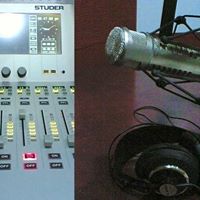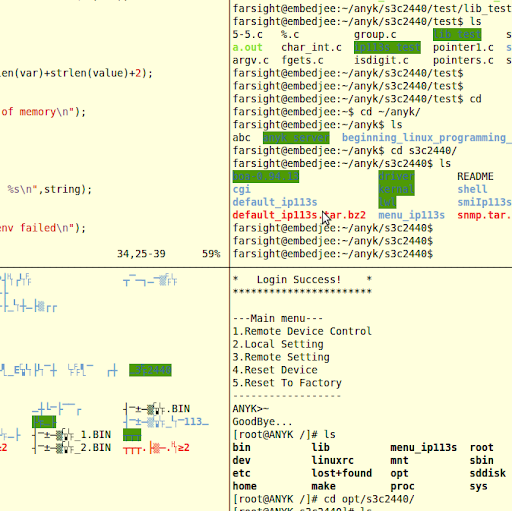Jian Cao
age ~56
from Wilmette, IL
- Also known as:
-
- Jia N Cao
- Cao J Imi
- Jian Wen
- Phone and address:
- 1016 Hibbard Rd, Wilmette, IL 60091
Jian Cao Phones & Addresses
- 1016 Hibbard Rd, Wilmette, IL 60091
- 3125 Melrose Ct, Wilmette, IL 60091 • (847)2514368 • (847)8539533
- Arlington, VA
- Evanston, IL
- Dover, NH
- Cambridge, MA
- Madison Heights, MI
- 12 Inman St APT 42, Cambridge, MA 02139 • (617)5711626
Work
-
Position:Service Occupations
Education
-
School / High School:St. Marys University School of Law
Ranks
-
Licence:New York - Currently registered
-
Date:2004
Isbn (Books And Publications)

Proceedings of the ASME Manufacturing Engineering Division--2001: Presented at the 2001 ASME International Mechanical Engineering Congress and Exposition November 11-16, 2001, New York, New York
view sourceAuthor
Jian Cao
ISBN #
0791835499

License Records
Jian Cao
License #:
25841 - Active
Issued Date:
Aug 31, 2007
Renew Date:
Dec 1, 2015
Expiration Date:
Nov 30, 2017
Type:
Certified Public Accountant
Lawyers & Attorneys

Jian Cao - Lawyer
view sourceAddress:
Kunlun Law Firm
(866)4096455 (Office)
(866)4096455 (Office)
Licenses:
New York - Currently registered 2004
Education:
St. Marys University School of Law
Name / Title
Company / Classification
Phones & Addresses
Manager Statistical Applications
Tibco Software Inc
Custom Computer Programing
Custom Computer Programing
212 Elm St, Somerville, MA 02144
281 Summer St, Boston, MA 02210
(617)7021600
281 Summer St, Boston, MA 02210
(617)7021600
Us Patents
-
Real-Time Draw-In Sensors And Methods Of Fabrication
view source -
US Patent:6769280, Aug 3, 2004
-
Filed:May 7, 2002
-
Appl. No.:10/140916
-
Inventors:Jian Cao - Wilmette IL
Junghoon Lee - Wilmette IL
Michael Peshkin - Evanston IL -
Assignee:Northwestern University - Evanston IL
-
International Classification:B21D 2222
-
US Classification:72 173, 72347, 72350
-
Abstract:A method and system for providing real time measurements of draw-in for closed loop control of a metal forming process including an elongated sensor on one of the tools positioned in the proximity of the deformation zone and adjacent to an edge of a sheet metal blank being formed. The sensor includes coils disposed in a signal coupling relationship and during the forming process, a signal applied to one of the coils induces a signal in the coil, producing a response signal that varies linearly as a function of the amount of overlap between the sensor and the sheet metal blank as the sheet metal blank is drawn into the deformation zone. A feedback signal produced from the response signal is used to control a parameter of the forming process as a function of retreat of the edge of the sheet metal blank into the deformation zone.
-
Microforming Method And Apparatus
view source -
US Patent:8408039, Apr 2, 2013
-
Filed:Oct 6, 2009
-
Appl. No.:12/587408
-
Inventors:Jian Cao - Wilmette IL, US
Anthony Swanson - Chicago IL, US
Tiffany Davis - Chicago IL, US -
Assignee:Northwestern University - Evanston IL
-
International Classification:B21J 11/00
B21D 5/06
B21B 27/06 -
US Classification:72418, 72446, 72455, 723792, 72404, 72414, 72462
-
Abstract:Method of forming depressions (e. g. dimples) in a sheet material to form a textured surface thereon involves pressing one or more tool tips into a metallic or non-metallic sheet material while the sheet material is supported by a support layer that is relatively softer (e. g. having a lower Young's modulus) than the sheet material so as to allow plastic deformation and reduce pile-up of raised displaced material of the sheet material at the edges of the depressions.
-
Deformation Machining Systems And Methods
view source -
US Patent:8545142, Oct 1, 2013
-
Filed:Mar 6, 2009
-
Appl. No.:12/399703
-
Inventors:Kevin Scott Smith - Huntersville NC, US
Bethany A. Woody - Charlotte NC, US
John C. Ziegert - Seneca SC, US
Jian Cao - Wilmette IL, US -
Assignee:University of North Carolina at Charlotte - Charlotte NC
Clemson University - Clemson SC
Northwestern University - Evanston IL -
International Classification:B23C 9/00
B23C 1/16
B21D 22/02
B21D 31/00 -
US Classification:409 80, 72 68, 723792
-
Abstract:The present invention relates generally to deformation machining systems and methods that combine, in a single machine tool setup, the machining of thin structures and single point incremental forming (SPIF), such that novel part geometries and enhanced material properties may be obtained that are not achievable using conventional machining or forming systems and methods, individually or collectively. Important to many applications, lighter weight parts may be produced at lower cost using a conventional 3-axis computer numerically controlled (CNC) machine tool or the like, instead of the conventional 5-axis CNC machine tool or the like that is typically required.
-
Hybrid Energy Storage System
view source -
US Patent:20110084648, Apr 14, 2011
-
Filed:Oct 9, 2009
-
Appl. No.:12/576803
-
Inventors:Jian Cao - Chicago IL, US
Ali Emadi - Chicago IL, US -
International Classification:H02J 7/00
-
US Classification:320103, 320167, 307 91
-
Abstract:A hybrid energy storage system for supplying power to an application with a fluctuating load profile, such as, for example, electric vehicles, hybrid electric vehicles, plug-in hybrid electric vehicles, wind energy harvesting equipment and solar energy harvesting equipment. The hybrid energy storage system includes an ultra-capacitor electrically connected to a DC bus and a power source electrically connected to the DC bus via a controlled switch. The hybrid energy storage system further including a DC/DC converter connected between the power source and the ultra-capacitor, the DC/DC converter boosting a voltage of the power source to charge the ultra-capacitor. The DC/DC converter is preferably controlled to maintain a voltage of the ultra-capacitor at a higher value than the voltage of the power source.
-
Electrical-Assisted Double Side Incremental Forming And Processes Thereof
view source -
US Patent:20120055217, Mar 8, 2012
-
Filed:Aug 30, 2011
-
Appl. No.:13/221304
-
Inventors:John Roth - Mckean PA, US
Jian Cao - Wilmette IL, US -
Assignee:The Penn State Research Foundation - University Park PA
-
International Classification:B21D 26/00
-
US Classification:72 54
-
Abstract:A process for forming a sheet metal component using an electric current passing through the component is provided. The process can include providing a double side incremental forming machine, the machine operable to perform a plurality of double side incremental deformations on the sheet metal component and also apply an electric direct current to the sheet metal component during at least part of the forming. The direct current can be applied before or after the forming has started and/or be terminated before or after the forming has stopped. The direct current can be applied to any portion of the sheet metal. The electrical assistance can reduce the magnitude of force required to produce a given amount of deformation, increase the amount of deformation exhibited before failure and/or reduce any springback typically exhibited by the sheet metal component.
-
Deformation-Based Micro Surface Texturing System
view source -
US Patent:20120164384, Jun 28, 2012
-
Filed:Dec 15, 2011
-
Appl. No.:13/374210
-
Inventors:Jian Cao - Wilmette IL, US
Rui Zhou - Evanston IL, US
Kornel F. Ehmann - Evanston IL, US -
International Classification:B32B 3/00
B29C 59/02 -
US Classification:428141, 425385, 264293
-
Abstract:A compact deformation-based micro-texturing apparatus and method employ flexure bearing houses for rotatably supporting opposite ends of each of a first (e.g. upper) roll and a second (e.g. lower) roll to provide a working roll gap between the rolls, wherein at least one of the rolls has one or more micro surface features to plastically deform a surface of a workpiece deformed by rolling action in the roll gap. An electrical current may be passed through the workpiece to assist micro deformation. A roll gap adjusting device is operably associated with the first and second flexure bearing houses for adjusting the roll gap dimension to the final depth of the micro surface features to be imparted to the surface of the workpiece by the rolling action.
-
Forming Tools Having Textured Surfaces
view source -
US Patent:20130291613, Nov 7, 2013
-
Filed:May 7, 2012
-
Appl. No.:13/465587
-
Inventors:Zhiyong Cedric Xia - Canton MI, US
Jian Cao - Wilmette IL, US
Qian Wang - Mt. Prospect IL, US
Rajesh Talwar - St. Louis MO, US
Donald J. Grzina - St. Louis MO, US
Tiffany Davis Ling - Plymouth MN, US
Pinzhi Liu - Evanston IL, US -
Assignee:FORD GLOBAL TECHNOLOGIES, LLC - DEARBORN MI
-
International Classification:B21D 24/04
G06F 17/50
B21D 22/00 -
US Classification:72350, 723792, 703 1
-
Abstract:A manufacturing method forms components having a desired shape. A contoured surface is defined for a forming tool for forming a metal blank into the desired shape, wherein respective portions of the metal blank flow over the contoured surface during forming. An intrinsic material flow pattern resulting from the contoured surface is compared to a desired flow in order to identify regions of the contoured surface having an insufficient flow that creates areas in the formed metal blank receiving less than a desired amount of metal. A surface microtexture is applied onto the contoured surface in a pattern selected to increase metal flow along the identified regions by providing a friction in the identified regions that is reduced relative to adjacent regions of the contoured surface.
-
Adaptive Method And Apparatus For Forming Tailor Welded Blanks
view source -
US Patent:59411104, Aug 24, 1999
-
Filed:May 12, 1997
-
Appl. No.:8/854480
-
Inventors:Jian Cao - Wilmette IL
Brad L. Kinsey - Clio MI -
Assignee:Northern University - Evanston IL
-
International Classification:B21B 3700
-
US Classification:72 214
-
Abstract:Method and apparatus for TWB forming with adaptive control of movable punch and/or die segments in a manner to maintain a holding force at the weld line by the punch and die segments during at least initial forming of the blank in a manner to control and limit movement of the weld line. A tailor welded metal blank having a weld line is positioned between a punch and a die with the weld line spanning a cavity defined between the punch and the die. One or more individual segments of the punch and of the die are moved in a manner to engage opposite side regions of the weld line to apply a holding force to the weld line. Relative movement of the punch and/or die segments is adaptively controlled during at least initial deformation of the blank by the punch in a manner to maintain the holding force applied to weld line at a selected holding force value to retain the weld line in a plane defined by the punch and die segments, thereby reducing weld line movement. After initial deformation of the blank by movement of the punch to a preset punch location, the punch and die segments can be retracted away from the weld line during subsequent deformation of the blank.
Resumes

Board Member
view sourceLocation:
2010 Orrington Ave, Evanston, IL 60201
Industry:
Mechanical Or Industrial Engineering
Work:
Mhub Chicago
Board Member
Northwestern University
Director, Northwestern Initiative For Manufacturing Science and Innovation
Northwestern University
Associate Vice President For Research
Northwestern University
Cardiss Collins Professor of Mechanical Engineering
Board Member
Northwestern University
Director, Northwestern Initiative For Manufacturing Science and Innovation
Northwestern University
Associate Vice President For Research
Northwestern University
Cardiss Collins Professor of Mechanical Engineering
Education:
Massachusetts Institute of Technology 1990 - 1995

Program Manager
view sourceLocation:
2438 Embarcadero Way, Palo Alto, CA 94303
Industry:
Biotechnology
Work:
Cepheid
Program Manager
Jc Medical, Inc.
Associate Director of Operations
Jc Medical, Inc. Sep 2015 - May 2016
Program Manager
Centrillion Biosciences, Inc. Jan 2014 - Sep 2015
Staff Scientist
Stanford University School of Medicine Mar 2009 - Dec 2013
Postdoctoral Research Scientist
Program Manager
Jc Medical, Inc.
Associate Director of Operations
Jc Medical, Inc. Sep 2015 - May 2016
Program Manager
Centrillion Biosciences, Inc. Jan 2014 - Sep 2015
Staff Scientist
Stanford University School of Medicine Mar 2009 - Dec 2013
Postdoctoral Research Scientist
Education:
University of California, Santa Cruz 2002 - 2008
Doctorates, Doctor of Philosophy, Molecular Biology, Philosophy Peking University 1998 - 2002
Bachelors, Bachelor of Science, Molecular Biology, Biochemistry Stanford University
Doctorates, Doctor of Philosophy, Molecular Biology, Philosophy Peking University 1998 - 2002
Bachelors, Bachelor of Science, Molecular Biology, Biochemistry Stanford University
Skills:
Cell Biology
Molecular Cloning
Confocal Microscopy
Genetics
Microscopy
Western Blotting
Biochemistry
Molecular Biology
Dna Sequencing
Genomics
Medical Device R&D
Project Management
Protein Chemistry
Immunohistochemistry
Molecular Cloning
Confocal Microscopy
Genetics
Microscopy
Western Blotting
Biochemistry
Molecular Biology
Dna Sequencing
Genomics
Medical Device R&D
Project Management
Protein Chemistry
Immunohistochemistry
Interests:
Economic Empowerment
Education
Environment
Poverty Alleviation
Science and Technology
Arts and Culture
Health
Education
Environment
Poverty Alleviation
Science and Technology
Arts and Culture
Health
Languages:
Mandarin
Cantonese
English
Cantonese
English

Jian Qiu Cao
view sourcePlaxo

Jian Cao
view sourceNorthwestern University
Youtube

Jian Cao
view source
Jian Cao
view source
(Jian Cao)
view source
Jian Cao
view source
Jian Cao
view source
Jian Cao
view source
Jian Cao
view source
Jian Cao
view sourceGoogleplus

Jian Cao
Work:
Unemploy.
Education:
Kwantlen Polytechnic University

Jian Cao
Education:
Jilin University - Software
About:
An software engineerTravel to the China's most Oriental part to see the sunrise by selflove the secret garden
Tagline:
Good to Great

Jian Cao

Jian Cao (Iissy)

Jian Cao

Jian Cao

Jian Cao

Jian Cao
Myspace
Get Report for Jian Cao from Wilmette, IL, age ~56







